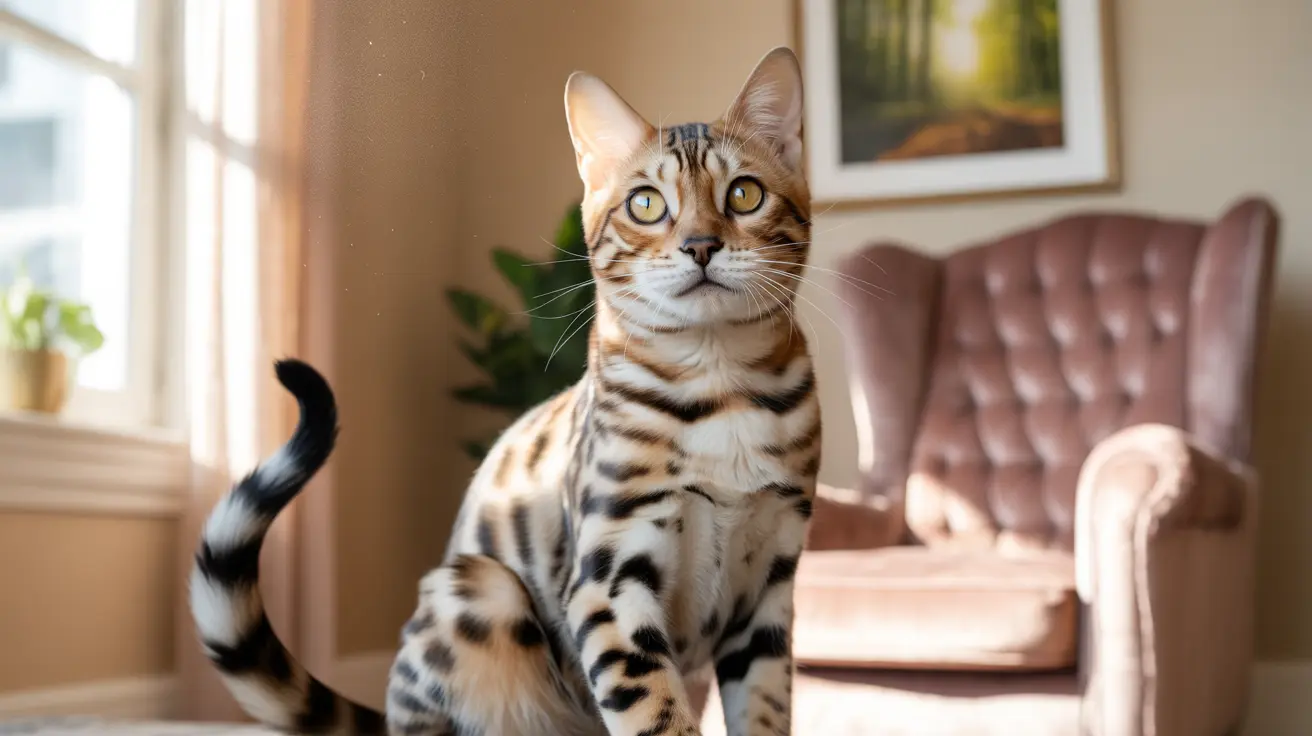If you've ever wondered "why is my cat so demanding," you're not alone. Many cat owners face persistent meowing, constant following, and attention-seeking behaviors that can range from endearing to frustrating. Understanding the root causes of these demanding behaviors is crucial for maintaining a healthy relationship with your feline companion.
While some cats are naturally more social and vocal than others, excessive demanding behavior often signals underlying needs or issues that require attention. Let's explore the various reasons behind demanding cat behavior and learn effective solutions to address them.
Common Signs of Demanding Cat Behavior
Demanding cats typically display several distinctive behaviors that can impact daily life:
- Excessive meowing or vocal demands
- Following owners from room to room
- Pawing, scratching, or jumping for attention
- Disrupting activities like work or sleep
- Knocking items off surfaces
- Persistent food begging
Understanding the Root Causes
Medical Issues
Before assuming your cat is simply being demanding, it's essential to rule out medical causes. Health conditions such as hyperthyroidism, diabetes, or chronic pain can manifest as increased neediness or attention-seeking behavior. If your cat's demanding behavior appears suddenly or increases dramatically, schedule a veterinary check-up.
Emotional and Environmental Factors
Many cats become demanding due to:
- Stress or anxiety
- Boredom and lack of stimulation
- Changes in routine or environment
- Separation anxiety
- Insufficient social interaction
How to Address Demanding Behavior
Create a Structured Routine
Cats thrive on predictability. Establish regular times for:
- Feeding
- Interactive play sessions
- Cuddle time
- Environmental enrichment activities
Enhance Environmental Enrichment
Provide multiple sources of stimulation:
- Cat trees and climbing spaces
- Window perches with bird-watching opportunities
- Puzzle feeders and interactive toys
- Scratching posts in various locations
- Safe outdoor access (like a catio) when possible
Positive Reinforcement Training
Train your cat using positive reinforcement techniques:
- Reward calm, non-demanding behavior
- Ignore excessive demands
- Provide alternative activities during peak demanding times
- Use clicker training for desired behaviors
Prevention Strategies
Prevent demanding behavior before it starts by:
- Maintaining consistent daily routines
- Providing adequate physical and mental stimulation
- Addressing stress factors promptly
- Ensuring proper nutrition and health care
- Creating multiple resources throughout your home
When to Seek Professional Help
Consider consulting a veterinarian or certified cat behaviorist if:
- Demanding behavior appears suddenly
- Traditional management techniques aren't working
- Your cat shows signs of distress or anxiety
- The behavior impacts quality of life for you or your cat
Frequently Asked Questions
Why is my cat constantly meowing and following me everywhere?
This behavior often indicates a need for attention, hunger, or underlying anxiety. It can also signal medical issues, especially in older cats. Establish regular feeding and play schedules, and consult your vet to rule out health concerns.
Could my cat's demanding behavior be a sign of an underlying medical issue?
Yes, sudden increases in demanding behavior can indicate various health issues, including thyroid problems, pain, or cognitive dysfunction. Always consult your veterinarian if you notice significant behavioral changes.
How can I stop my cat from pawing or jumping on me to get attention?
Consistently ignore the unwanted behavior while rewarding calm alternatives. Provide scheduled attention times and ensure your cat has enough environmental enrichment and physical activity.
What are effective ways to reduce my cat's attention-seeking caused by boredom or anxiety?
Implement regular play sessions, provide interactive toys and climbing spaces, consider puzzle feeders, and maintain consistent daily routines. For anxiety, try pheromone diffusers and create safe spaces throughout your home.
When should I consult a vet or behaviorist about my cat's sudden increase in demanding behavior?
Seek professional help if the behavior change is sudden, severe, or accompanied by other symptoms like changes in appetite, weight, or litter box habits. Also consult professionals if management strategies aren't working after several weeks of consistent implementation.
Remember that while demanding behavior can be challenging, it often stems from your cat's attempt to communicate needs or concerns. With patience, consistency, and appropriate interventions, you can help your cat develop more balanced behavior while maintaining a strong bond.






